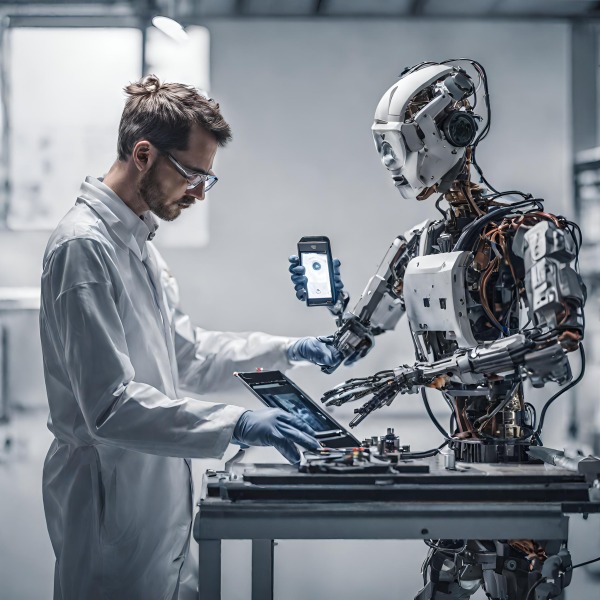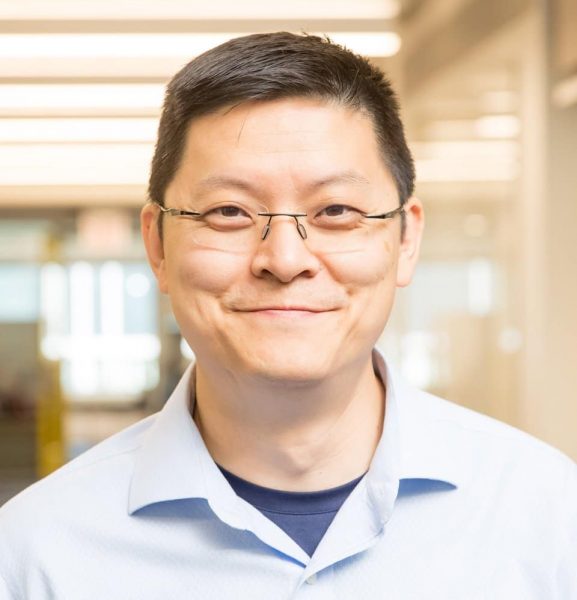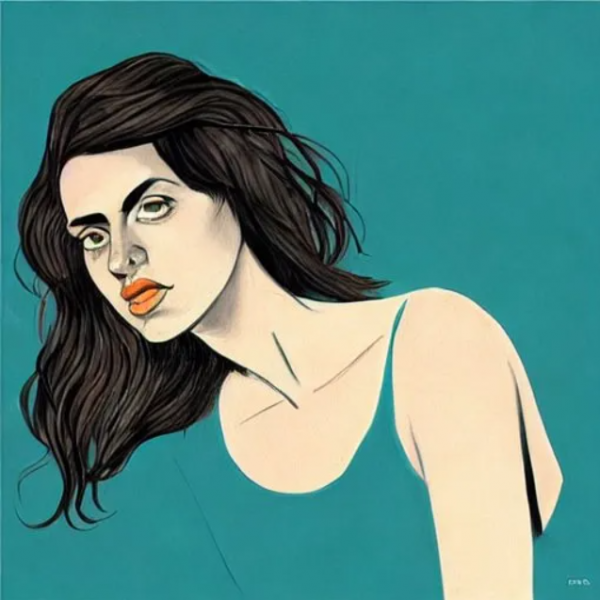Introduction
In the same way that computing is everywhere and crosses boundaries into all facets of life, the same can be said for art, except art has been around much longer. The human condition has been described through artistic expression before words could attempt to do the same, and we still believe that a picture is worth a thousand words.
Now, artificial intelligence is here and has been here for awhile. A technology that has the potential to bring out the best and the worst, the power of AI rests in that of the beholder. This tool – which has the ability to further unlock the human imagination as well as the potential to eliminate our creative spark entirely – is as predictable as it is unpredictable, and the conversation on the place of artificial intelligence in society is constantly evolving.
As AI permeates into the world of artistic expression, visual art is not the only area affected. Music, literature, even theater, will be impacted by the effects of artificial intelligence. However, the battle rages fiercely between visual artists and AI, who face the goliaths of tech companies with ideas as creative as the ones on their canvases.
Canvas Clash – Artist vs AI

Generative AI has the ability to create complex and attractive images all from a simple prompt. All that is required for a casual user to generate AI art is the ability to speak a language, pay a monthly subscription, and sacrifice a few minutes of their time. However, the classic expression “if it seems too good to be true, it probably is” could apply to this technology that is as controversial as it is revolutionary.
Whether it’s OpenAI (ChatGPT), Meta, Google, or any of the other many purveyors of generative AI, these companies utilize datasets of images to provide training material for their bots. The LAION-5B dataset, for instance, is a set of over 6 million URLS to original images that can be used to train image generation bots. These images are largely unlicensed, compiled without the consent of the creators of these works. Artists whose works appear in these datasets are often completely unaware their creations are being used in this way, since they are hardly ever notified. (1) (2) The ethics of AI art generation models are being called into question due to this.
Initial backlash on this issue brought about platform-led ‘opt-out’ programs, which claimed to allow artists to contact them via a set process to remove their artwork from the training data. There are several problems with this option:
- Companies do not always hold up their end of the deal, often lengthening and complicating the opt out process or ceasing to respond.
- This solution puts the burden of protection on the creator rather than the companies who wish to use their creation.
- Successfully opting out only helps artist’s future works stay clear of AI datasets…AI models were likely already trained on their work before opting out.
- AI remembers concepts and traits of a certain image/set of images even when one is only temporarily in their training data before being removed.
However, the opt-out idea is a step in the right direction for these artists, but it needs to develop fast to make a difference. To name a few solutions:
- Opt-IN rather than opt-OUT. Require companies to make contact and obtain permission
- Revenue sharing.
- Metadata tracking and audit trails to trace back to sources of infringement. (3)
If an AI can be trained to steal billions of images from the internet, an AI can be trained to recognize unlicensed/copyrighted images and choose not to include them in the dataset. However, the predatory AI utilized here is evolving faster than the guardrails – big AI corporations have financial resources that artists do not.
Several class-action lawsuits have been leveled against AI platforms who have participated in these practices and utilized datasets like LAION-5B. You can read more about specific cases and the individuals involved using the buttons below – this blog will discuss some takeaways from these cases as well as other legal highlights-

The results of the legal battles thus far have provided positive and negative outcomes for artists pursuing protection of their works from AI datasets. For one, a judge ruled as of 2023 that AI generated images cannot be copyrighted, setting a crucial precedent that will affect all future cases (1) (4).
The scales tip forward and backward from two extremes during these cases. On one hand – willful infringement of copyright can carry monetary penalties of up to $150,000 per instance. A generative AI company using a dataset with billions of unlicensed work could be subject to being nailed with a staggering amount of money, but only if somehow the plaintiffs can show proof that the company had knowledge of the copyright and intentionally utilized works knowing that. (1)
On the other hand, proceedings have also hinted towards the opposite of this, largely delivering impunity to these companies unless “substantial similarity” between generated works and artist images can be shown, which is a tough ask. AI-generated art can contain flecks of elements from numerous human-created images, so many that it would be hard to determine what parts came from which piece.

There have been some wins for AI artists seeking protections for their work. For one, while federal courts have largely stayed quiet about the issue, they have taken a clear stance that AI-generated images may not be copyrighted, much to the dismay of AI artists. The government’s stance is that a work must be created by a human, and this does not include a human prompt engineering with an AI to generate artwork.
Other successes, although their outcomes may be fleeting due to the rapid advancement of AI, include the utilization of tools to confuse AI training systems. These tools use a ‘fighting fire with fire’ approach, so to say. Nightshade is one program which confuses the extractable metadata of an image when an AI is training on it. The AI would normally use this metadata to learn that the image they are looking at is in fact a lion, or a cat, or the Mona Lisa. When the metadata is intentionally confusing, the AI misunderstands the image and will misuse it when generating future works. Another tool is Glaze, which alters the pixels of an artwork in a way that is mostly imperceptible to humans but will confuse an AI in a similar fashion as Nightshade. Dr. Ben Zhao (University of Chicago) and his team are leaders in developing these tools. (5)
Why can’t we be friends? – Artist and AI
While the dangers that AI presents for genuine human artists deserve discussion, it is also important to highlight the fascinating positives of supplementing human creativity with AI. AI can be a powerful tool for artists, pushing their imagination by aiding with inspiration – in visual arts, musical pieces, and with literature. Assuming a balance, one that still maintains artist authenticity and doesn’t encourage overreliance, an artist’s creative expression can expand. (6)
Additionally, some creative thinkers are repurposing AI to fill less of a corporate role and more of a humanist role. Existing AI tools owned by large companies have difficulty identifying non-binary individuals in their training data and therefore are unable to generate depictions of non-gender-conforming people. This is not the fault of the AI – the machine learning will learn what it is directed to learn. Jake Elwes’s Zizi Project is a great example of utilizing AI for this end: Elwes trains AI models using photoshoots with consenting drag queens. Beforehand, they agreed on compensation for their time as well as the conditions for using their likeness, and the completed AI is able to generate new photoshoots of drag queens based on the training data. (6)
Another positive way that AI has been leveraged for human creations has been utilizing AI models to secure the integrity of artistic history. AI models have been trained to detect fraudulent art by collecting data on the brushstrokes and patterns, operating off of a digital photograph alone. A Swiss system called “Art Recognition” can detect forged artwork with 90% accuracy. This in-depth training centered on artistic style can also be utilized to compose art in the style of lost artists, which has interesting implications to discuss further, but surely is no harm as long as it is clear that the work is AI-generated. (7)
Efforts like these allow AI to fill an alternative and artistic role, contrary to the goal of many AI developers that aim to appeal to wider audiences. Allowing AI to play a part of this role takes some of the hype about AI in innovation and puts it in a place of preservation, conservation, and representation.

Conclusion
The interplay between artificial intelligence and artistic creations embodies a broad spectrum of positives and negatives and teeters on a delicate balance between innovation and integrity. As AI continues to pervade into artistic expression, the debate surrounding copyright, creativity, and collaboration becomes increasingly fierce. This battle stands at the forefront of a new era, in which machine learning can either push human ingenuity to new heights or crumble the foundation of individual creativity. As this technology begins to continually develop, we need to be mindful that the future of art is not just a display of our technological feats, but rather a showcase of the limitless possibilities of human collaboration and creativity.
Works Cited
- G Appel, J Neelbauer, D Schweidel. (2023). Generative AI has an intellectual property problem. Harvard Business Review. Retrieved from https://hbr.org/2023/04/generative-ai-has-an-intellectual-property-problem
- Knibbs, K. (Date). Artists say AI image generators are copying their styles. AP News. Retrieved from https://apnews.com/article/artists-ai-image-generators-stable-diffusion-midjourney-7ebcb6e6ddca3f165a3065c70ce85904
- Wong, M. (2023). OpenAI’s DALL-E 3 and the artist’s work. The Atlantic. Retrieved from https://www.theatlantic.com/technology/archive/2023/10/openai-dall-e-3-artists-work/675519/
- Allen, M. (Date Unknown). AI and art copyright. Wired. Retrieved from https://www.wired.com/story/ai-art-copyright-matthew-allen/
- Veltman, C. (2023). New tools help artists fight AI by directly disrupting the systems. NPR. Retrieved from https://www.npr.org/2023/11/03/1210208164/new-tools-help-artists-fight-ai-by-directly-disrupting-the-systems
- Schwarz, G. (2023). Artists using artificial intelligence. The Guardian. Retrieved from https://www.theguardian.com/artanddesign/2023/aug/10/artists-using-artificial-intelligence-science-gallery
- Hencz, A. (2023). AI art. Artland Magazine. Retrieved from https://magazine.artland.com/ai-art/